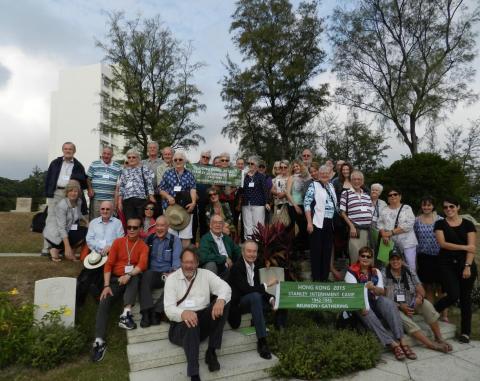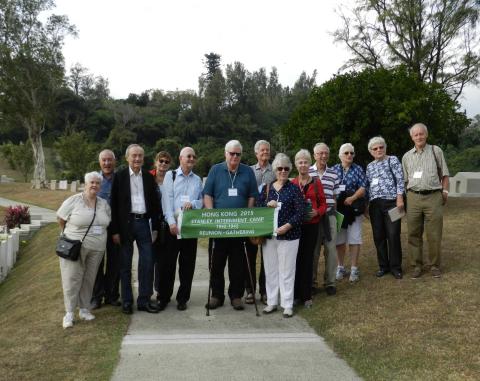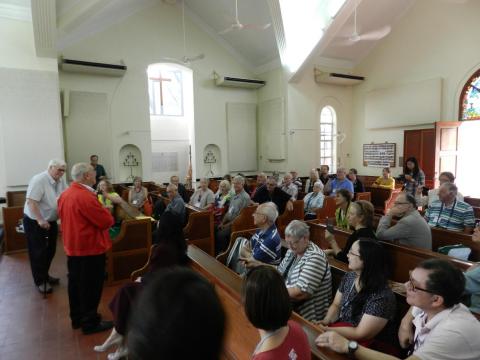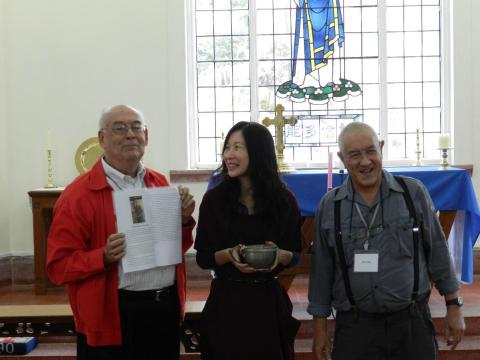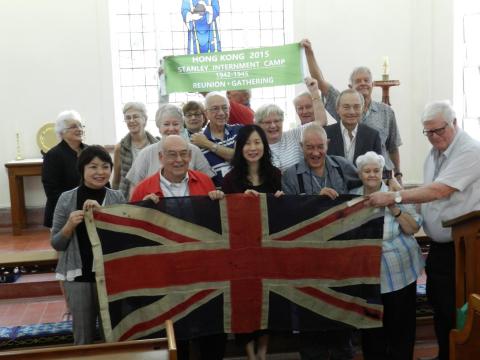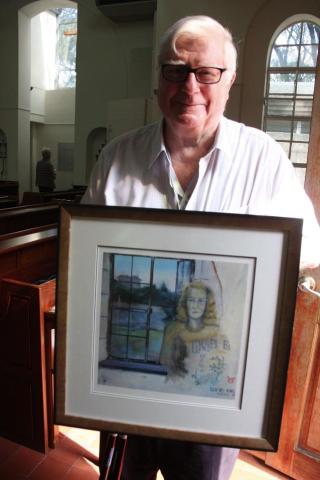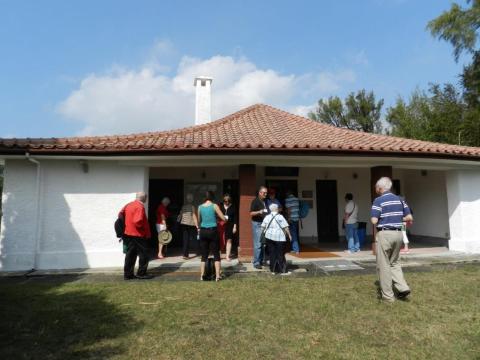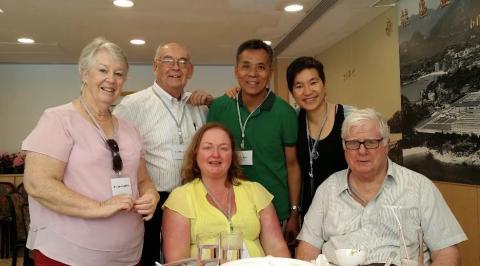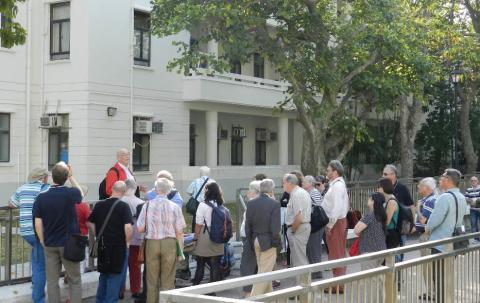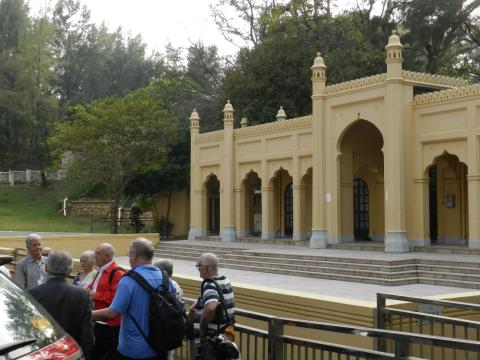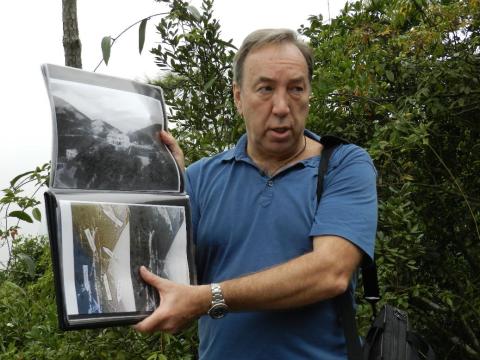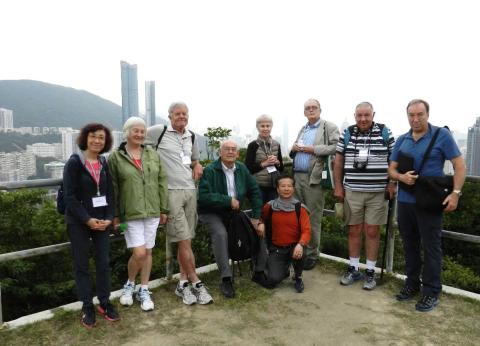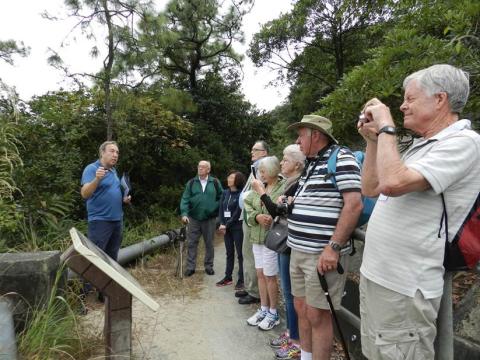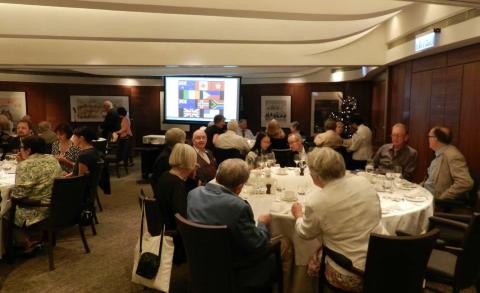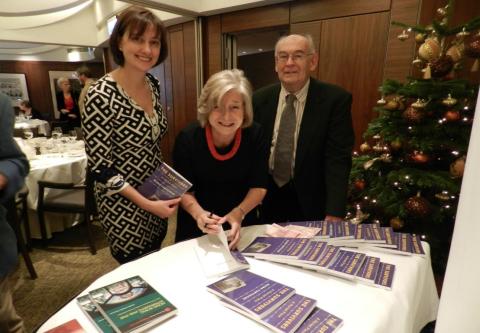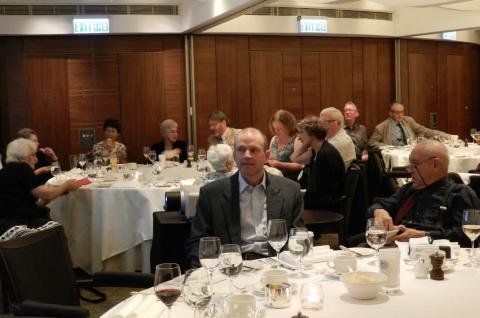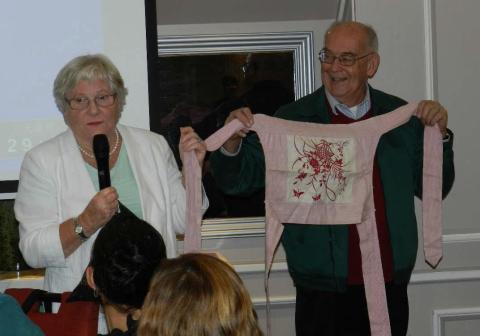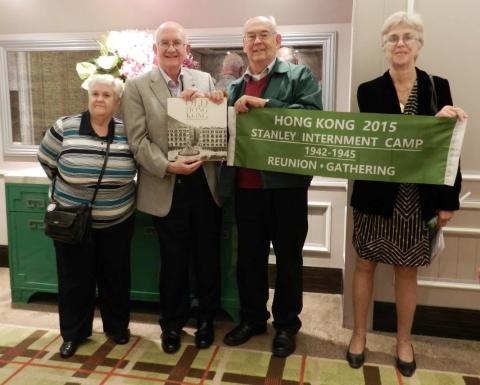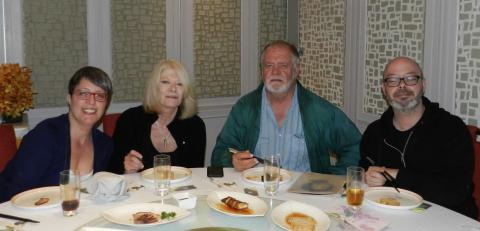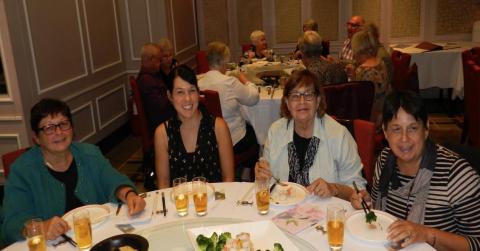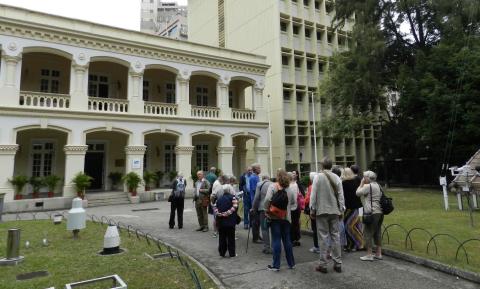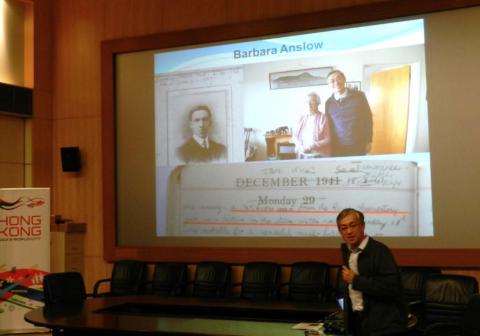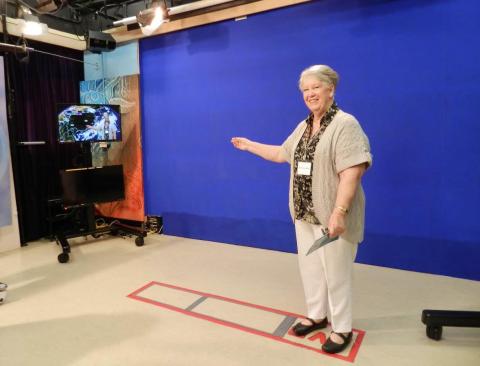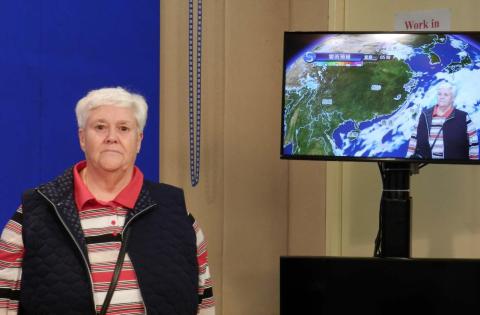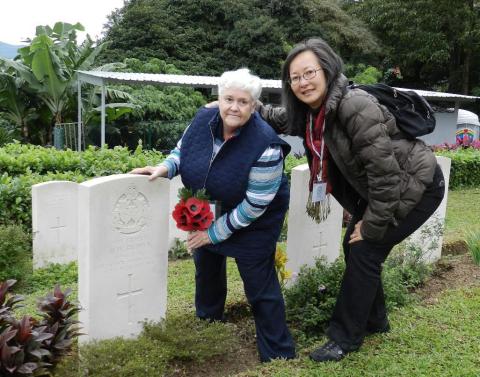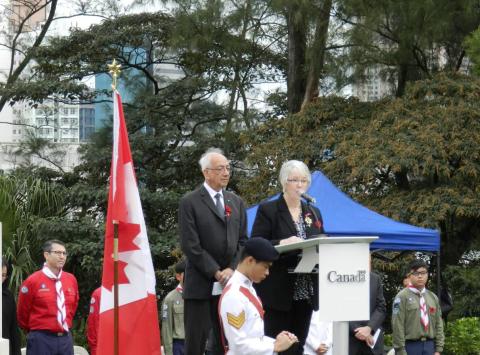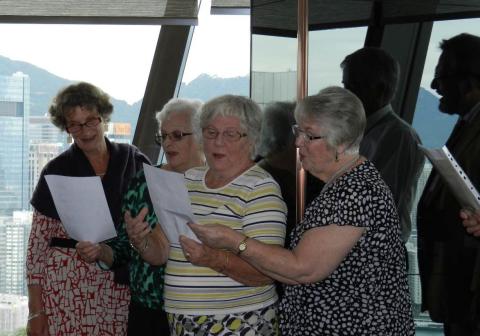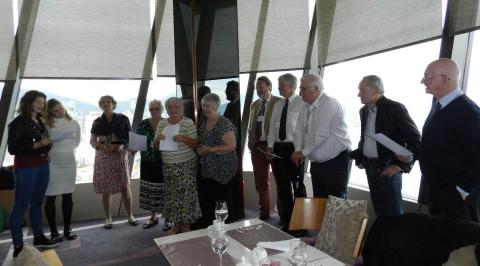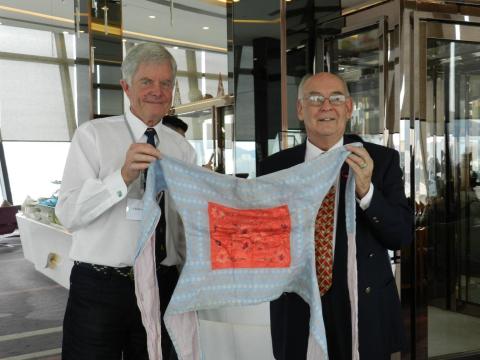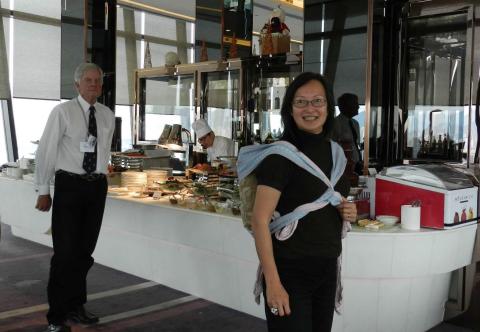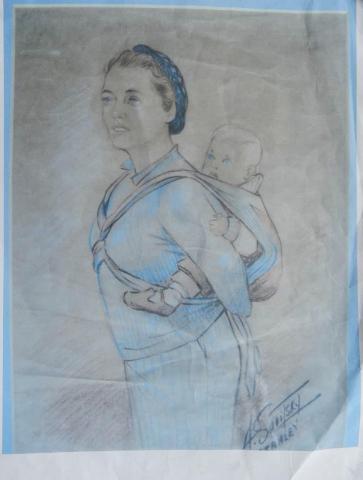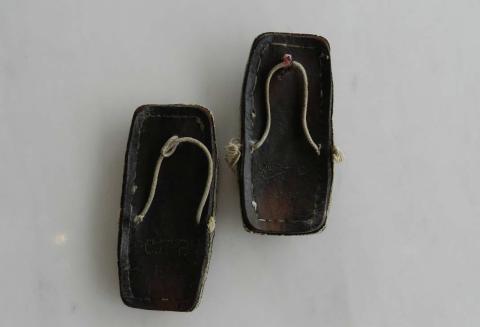HONG KONG STANLEY REUNION‐GATHERING REPORT – DECEMBER 2015
By Geoff Emerson
They came from eight countries – Canada, USA, New Zealand, Australia, South Africa, Ireland, England and Norway ‐ for a week (December 1‐6, 2015). Twelve were children in the Camp or born or conceived there. For the twelve, it was a Reunion, and for the others a Gathering. In all 34 came from overseas and several resident in Hong Kong. Never did I expect so many and earlier this year I was wondering if we would make the minimum number, which I had set at 10. Most stayed at the Harbour Grand Hotel in North Point on HK island.
We began on December 1st with a Welcome Lunch at the Peak, in Café Deco, with a spectacular view of HK harbor. Though overcast, the view was clear all the way to the mountains between Kowloon and the New Territories. Although we did not see much sun during the week, we were fortunate that it did not rain on our parade – the only rain we experienced was on Saturday after yum cha on Nathan Road, which didn’t matter much. The temperature was a comfortable one, ranging from 17 to 20 Centigrade (around 65 Fahrenheit).
After lunch that first day we visited Stanley Military Cemetery, next to the site of the internment Camp ‐ St Stephen’s College and Stanley Prison. A 23‐page Guide to the graves of the internees who died from 1942‐1945 had been prepared by historian Philip Cracknell, who was with us in the cemetery. This gives information on every internee buried here. An online version can be found on Philip’s blog www.battleforhongkong.blogspot.hk. We spent more than an hour in the cemetery and both Philip and I spoke about the history there, especially in regard to the internment years.
Two photos taken in the cemetery – first the whole group:
Then the smaller group with those who were born before internment, during internment or conceived during internment:
From left, Rosemary Mitchell, Ian Gill, Dennis Clarke, Lydia Veriga Kirby, George Cautherley, Conner Hackett, Chris Potter, Barbara Hume Laidlaw, Elizabeth Joffe Sharp, Mike Thirlwell, Maureen Forster Coleman, Gill Millar Woolley and Brooke Himsworth.
The following day, December 2nd, we visited St Stephen’s College and the Prison grounds. At the College we first gathered in the memorial chapel built after the war in memory of those who had suffered and died at St Stephen’s.
One of the bungalows at the College used as housing by the internees has been converted into a small museum called the Heritage Gallery. On display there, besides the history of the College, are items and relics related to the internment years. This day there were three donations to the Gallery. The first was the top of a large thermos bottle used by Barbara Redwood Anslow’s mother Mabel Redwood as a food container during the internment. This had been kindly brought back to HK by Ian Gill, one of our participants, after he visited Barbara in England earlier this year.
Ian also presented a Union Jack which is thought to have been in an Indonesian internment camp during the war.
Finally, another of our participants, Conner Hackett, presented a painting showing his mother in Camp.
All these items were presented to the College and accepted by Deputy Principal Winnie Wong and by Cortia Chung, the teacher in charge of this wonderful Heritage Gallery (seen in the photo holding one corner of the Union Jack).
From the chapel we walked to the Gallery, stopping at the Main Hall building, now the College library, which had been used by the internees for worship services, performances and as a classroom.
Also we stopped to overlook the playing field, which the internees had used as gardens, with Stanley village in the distance.
We then continued on to the Gallery, one of the one‐family bungalows before the war in which more than 30 internees lived.
There we admired the displays and historical information. I took the opportunity to urge people to make further donations to the Gallery, which has been visited by more than 10,000 people since its opening just a few years ago, thanks to the now retired Principal, Dr Louise Law, who joined us for dinner the following night.
From the College we walked to the Prison grounds next door, where we were welcomed by our hosts Joyce and Tony Lo, both retired prison officers and good friends of mine. They were our hosts for lunch in what is today called the Correctional Services Club, and which the internees knew as the Central Recreation Hall. Joyce and Tony also hosted the lunch for the Reunion Group in 2011, so I will include a photo of them here this year, together with Barbara Laidlaw, Conner Hackett and his daughter Tamsin O’Dea.
This building was used as a canteen, a kindergarten, a lecture hall and for the Roman Catholic services. On the second floor was housing for single male internees. To have lunch (an excellent Cantonese meal) in this building with so many memories of the internment was very special. Before reaching the Club, we passed a building called the Dutch Block by the internees as mainly Dutch internees lived there. However, the Norwegian grandfather of one of our participants, Audun Urke from Norway, also had lived in this building so it was very special to Audun of course.
After lunch we toured parts of the prison grounds used by the internees, including the American and Married Quarters as well as the Indian Quarters.
We also saw the view from the grounds down into the prison itself, which the internees had viewed. Other notable sights were the Indian Quarters and the mosque, built for Muslim prison guards before the war and still in use today.
For many of the participants, perhaps most, this visit was the most moving event of the week.
Thursday and Friday included two walks and two dinners. Because of the size of the group, Philip Cracknell kindly offered to split the group and do two walks of the Wong Nei Chong Gap Battle Trail. I went with the Thursday group, and we all enjoyed Philip’s commentary and detailed explanations very much, for nearly three hours. He brought along with him many fascinating photographs as well as his laptop computer for illustrations. On Friday he repeated the walk for nearly 20 people.
The first dinner, on Thursday, was hosted at the Hong Kong Club by George Cautherley, who was born in Camp. We met two hours early and listened to three very interesting talks.
The first was by David Bellis, of Gwulo website fame, who told us how to use his website and search for information about internees. The second speaker was Diana Fortescue, whose parents were in Camp. Diana recently published in London a book about her parents, called The Survivors, and she signed copies.
Following her, Ian Gill spoke about his mother, Billie Gill, a truly remarkable lady. After the war she had a distinguished career with the United Nations in Geneva, Switzerland, receiving an MBE for her work. The Union Jack, which Ian presented to the Heritage Gallery shown earlier, had covered her coffin in Geneva in 2006.
The following evening, on Friday, a Peking duck dinner was held at Peking Garden, Taikoo Shing. Before the dinner Rosemary Mitchell, Brooke Himsworth and Barbara Hume Laidlaw spoke of their experiences, all having been born in Camp. Ian Gill again spoke to the group about his mother, and Gill Millar Woolley showed two items used in Camp – a baby sling and a small wooden jewelry box.
Yvonne and Gary kindly helped with the computer. Both evenings the talks led to questions and discussions, most interesting and worthwhile. The Group used this opportunity to present me with a beautiful book of old HK photographs as a token of their gratitude for organizing this Reunion.
The photos below taken at the Peking dinner show, first, Mike Bowie and his sister Margaret Guenard – their mother was in Camp – and Margaret’s twins, Jessica and Isaac. They came from Canada.
The second photo shows the three Veriga sisters – from left, Nikki, Lydia’s daughter, Anna, Lydia, born in Camp and Lee. Nikki and Lee were born after liberation. They all came from Australia.
Saturday for the only time during the Reunion, we crossed to Kowloon to visit the HK Observatory. During internment, the Director of the Observatory, Benjamin Evans, was interned in Stanley and Barbara Anslow remembers him giving talks about the stars and such. The Observatory is an unbelievable jungle‐like oasis in the midst of urban Kowloon, and the present Director, Shun Chi Ming, was Head Prefect at St Paul’s College when I was Vice Principal there in the early 1980s. Happily he has developed a very strong interest in the history of the Observatory and we have become close friends. Earlier this year we worked together on the publication of a book, “It Won’t Be Long Now”, written by Graham Heywood, the Director of the Observatory after the war, who was a POW in Shamshuipo Camp, Kowloon.
In the museum room at the Observatory are displays from Stanley Camp. The group enjoyed talks by Mr Shun relating to history and connections with Stanley as well as his visit with Barbara Anslow in England.
We then enjoyed a tour of the interesting facilities there, explained well by Sandy Song, Senior Scientific Officer and often seen on TV talking about the weather. Barbara Laidlaw and Rosemary Mitchell showed us how to read the weather reports.
Following the visit, we enjoyed a yum cha lunch at a nearby restaurant often used for wedding banquets high up in a new building on Nathan Road with views of Kowloon, the harbour and HK island.
Sunday, the last day of the Reunion, found us at the Sai Wan Commonwealth War Graves cemetery on HK island at the annual Canadian service of remembrance for those hundreds of Canadians who were killed in the Battle of HK in 1941 or later suffered as POWs.
Rosemary placed poppies on her uncle’s grave.
Two of our members were invited to speak at the service – Barbara Hume Laidlaw read two moving poems written by a POW in Shamshuipo Camp, Kowloon, and Michael Thirlwell, a baby in Camp and now resident in Canada, also spoke. Michael’s mother, aunts and grandmother were Stanley internees and he was born in St Paul’s Hospital during the war.
On behalf of our group I laid a poppy wreath beneath the large cross at the cemetery.
Following the service, we returned to the hotel for the Farewell Lunch on the 41st floor, with a spectacular view of HK, the harbour and Kowloon.
At the lunch we were entertained by Gill Woolley, a child in Stanley, with “Sail Away” a rousing song sung in Camp, which we all joined in singing. Also Brooke Himsworth, born in Camp, read a moving passage from a wartime letter.
Chris Potter showed us a baby sling in which he had been carried and Sylvia demonstrated its use.
He also brought a sketch drawn in Camp of his mother and him.
Finally he passed around a pair of shoes he had worn in Camp.
With feelings of gratitude for a wonderful Reunion week and regrets that it was coming to an end, we said our farewells. Many expressed the hope that I will organize future Reunions –I indeed hope to do so, perhaps in two years time. A final word of thanks to all those who attended, to George Cautherley, to Philip Cracknell, to Sylvia Fok‐Midgett, to Rocky and Eugenia of Phoenix Services, to Joyce and Tony Lo, and to Yvonne and Gary for all their help in making the week such a success.
P.S. For those reading this who were not participants, I will attach a few other things which they might find of interest. Six people joined the extension to Kaiping and I’m told had an excellent time.
STANLEY INTERNMENT CAMP – REUNION & GATHERING 2015
Hong Kong
| 30 Nov. Monday | Arrive & Check‐in Harbour Grand Hotel, North Point, HK island. |
| 1 Dec. Tuesday | 10:30 a.m. leave hotel. Welcome lunch, Cafe Deco, The Peak. After lunch, visit Stanley Military Cemetery. |
| 2 Dec. Wednesday | 10:00 a.m. Day in Stanley – St Stephen’s College; Lunch at the Correctional Services Club; after lunch, visit Stanley Prison grounds. |
| 3 Dec. Thursday | 9 a.m. – Walk Group A – Wong Nei Chong Gap, Philip Cracknell leader. Afternoon free. Evening – 5:30 – Dinner at the HK Club, hosted by George Cautherley. |
| 4 Dec. Friday | 9 a.m. – Walk Group B – Wong Nei Chong Gap. Afternoon free. 6 p.m. ‐ Evening – Peking Garden dinner, Taikoo Shing. |
| 5 Dec. Saturday | 9: 30 a.m. Visit to Hong Kong Observatory, Kowloon. Lunch – dim sum near the Observatory. |
| 6 Dec. Sunday | 8:45 a.m. Attend the Canadian memorial service at the Commonwealth War Graves cemetery, Chai Wan, HK Island. Farewell lunch, Harbour Grand Hotel, 41st Floor. |
| 7 Dec. Monday | Check‐out of hotel. |
| 7‐9 Dec. | Optional extension to Kaiping, China. |
Stanley Internment Camp Reunion-Gathering 2015
List of Participants
Ashe, Carolyn & Robert - Ireland - Her Grandmother, Father and late Husband were in Stanley Camp.
Bercene, Judy & Patrick - Australia - Her Aunt was in Stanley.
Cautherley, George - HK - He was born in Stanley.
Clarke, Dennis - HK - He was born in Stanley.
Fortescue, Diana - UK - Her Parents and Brother were in Stanley
Bowie, Mike - Canada - His Mother was in Stanley
Guenard, Margaret - Canada - (Mike’s sister) Mother in Stanley.
Guenard, Isaac - Canada - Margaret’s son.
Guenard-Valiquette, Jessica - Canada - Margaret’s daughter.
Coleman, Maureen & Ken - Australia - Maureen was a child in Stanley.
Gill, Ian - Philippines - His parents were in Stanley.
Hackett, Conner - Australia - Conner was born in Stanley.
O’Dea, Tamsin - Australia - Conner’s daughter.
Himsworth, Brooke - UK - Born in Stanley.
Laidlaw, Barbara - Australia - Barbara was born in Stanley.
Mitchell, Rosemary - UK - Rosemary was born in Stanley.
Potter, Chris & Cheryl - New Zealand - Chris was a child in Stanley.
Sharp, Elizabeth - UK - Elizabeth was born in Stanley.
Snyman, Wilhelm - South Africa - Historian
Urke, Ardun - Norway - Ardun’s Grandfather was in Stanley.
Woolley, Moger & Gill - UK - Gill was a child in Stanley.
Thirlwell Family
Thirlwell, Gweneth A. & Michael - Canada - Michael was born in Stanley.
Thirlwell, Celeste - Canada - Gweneth & Michael’s daughter.
Thirlwell, Gweneth M. - Canada - Gweneth A & Michael’s daughter.
Thirlwell, Constance - Canada - Gweneth A. & Michael’s granddaughter.
Thirlwell, Natasha - Canada - Gweneth A. & Michael’s granddaughter.
Kirby, Lydia Veriga - Australia - Born in Stanley (Mother – Aileen Thirlwell Veriga; Father – Vitaly Veriga, in Stanley).
Veriga, Nikki - Australia - Lydia’s sister (born in HK after the war).
Veriga, Lee - Australia - Lydia & Nikki’s sister, born in Australia.
Kirby, Anna - Australia - Lydia’s daughter.
Schubert, Ben - USA - Nikki’s son.
Thirlwell, Jimmy - HK - HK-based Cousin.
People You'll Meet – from Geoff
Among others helping with our Reunion/Gathering, you will be meeting Philip Cracknell. He is a long‐time resident of HK, a retired banker who is very keen on HK's World War II history, and he has an excellent blogspot ‐ The Battle For Hong Kong. Check it out. He has prepared notes for us on the internees buried in Stanley Cemetery (to be distributed the day of our visit there, 1 December) and will also be our guide for the walks on 3 and 4 December, the Wong Nei Chong Gap battle site.
Also you will be meeting Yvonne Lai and Gary Chan. Old friends of mine, they were colleagues at HSBC and are members of a Cantonese Opera singing club. They have both been helping me plan the Reunion and will be at most events to help out as well.
Of course you'll also be meeting Rocky Dang and Eugenia Choi, of Phoenix Services, with whom you've been corresponding. They handled the arrangements for the last Reunion in 2011, and I know you'll enjoy meeting them this year. They will join many of our events.
As for me, I first came to HK in 1964 from New York to teach at St Paul’s College, an Anglican (Episcopal) high school for Chinese boys located on Bonham Road, HK island, opposite the University of HK. For 31 years I served at various times as teacher of history and English, Vice Principal and Careers Master, taking time out in the early 1970s to write a thesis at HKU on Stanley Internment Camp. Also during the 1970s, I was president of the HK History Society, and after retiring in 2000, I served as a council member of the Royal Asiatic Society (HK Branch). I am an Honorary Research Associate in the Department of History at the University of HK.
From 1984 to 1986, I took a break from HK and sailed on the Yangtse River as Sinologist and Cruise Director on a ship for visitors to China. After retiring, I wrote Hong Kong Internment 1942‐1945 – Life in the Japanese Civilian Camp at Stanley, which was published by HKU Press in 2008. The book has gone into three printings and is now being translated into Chinese. This is the second Stanley Reunion I have organized, the first being in 2011. I live in the New Territories, HK, on Tsing Yi island.
